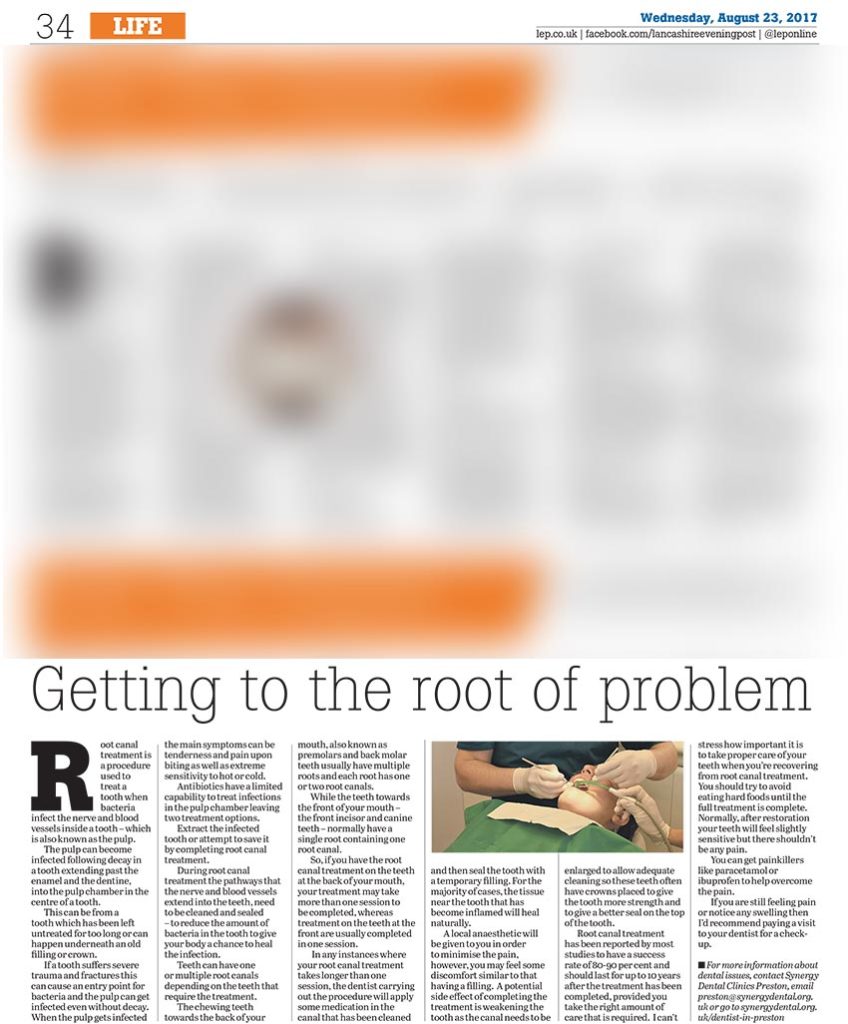Root canal treatment is a procedure used to treat tooth when bacteria infect the nerve and blood vessels inside a tooth–which is also known as the pulp. The pulp can become infected following decay in a tooth extending past the enamel and the dentine, into the pulp chamber in the center of a tooth.
This can be from a tooth which has been left untreated for too long or can happen underneath an old filling or crown. If a tooth suffers severe trauma and fractures this can cause an entry point for bacteria and the pulp can get infected even without decay. When the pulp gets infected the main symptoms can be tenderness and pain upon biting as well as extreme sensitivity to hot or cold.
Antibiotics have a limited capability to treat infections in the pulp chamber leaving two treatment options.
Extract the infected tooth or attempt to save it by completing root canal treatment. During root canal treatment the pathways that the nerve and blood vessels extend into the teeth, need to be cleaned and sealed –to reduce the number of bacteria in the tooth to give your body a chance to heal the infection. Teeth can have one or multiple root canals depending on the teeth that require the treatment.
The chewing teeth towards the back of your mouth, also known as premolars and back molar teeth usually have multiple roots and each root has one or two root canals. While the teeth towards the front of your mouth– the front incisor and canine teeth–normally have a single root containing one root canal.
So, if you have the root canal treatment on the teeth at the back of your mouth, your treatment may take more than one session to be completed, whereas treatment on the teeth at the front are usually completed in one session. In any instances where your root canal treatment takes longer than one session, the dentist carrying out the procedure will apply some medication in the canal that has been cleaned and then seals the tooth with a temporary filling. For the majority of cases, the tissue near the tooth that has become inflamed will heal naturally.
A local anesthetic will be given to you in order to minimise the pain, however, you may feel some discomfort similar to that having a filling. A potential side effect of completing the treatment is weakening the tooth as the canal needs to be enlarged to allow adequate cleaning so these teeth often have crowns placed to give the tooth more strength and to give a better seal on the top of the tooth.
Root canal treatment has been reported by most studies to have a success rate of 80-90 percent and should last for up to 10 years after the treatment has been completed, provided you take the right amount of care that is required.
I can’t stress how important it is to take proper care of your teeth when you’re recovering from root canal treatment. You should try to avoid eating hard foods until the full treatment is complete. Normally, after restoration, your teeth will feel slightly sensitive but there shouldn’t be any pain. You can get painkillers like paracetamol or ibuprofen to help overcome the pain.
If you are still feeling pain or notice any swelling then I’d recommend paying a visit to your dentist for a checkup.
For more information about dental issues, contact Synergy Dental Clinics Preston, email preston@synergydental.org.uk or go to https://synergydental.org.uk/synergy-dental/dentist-in-preston/

